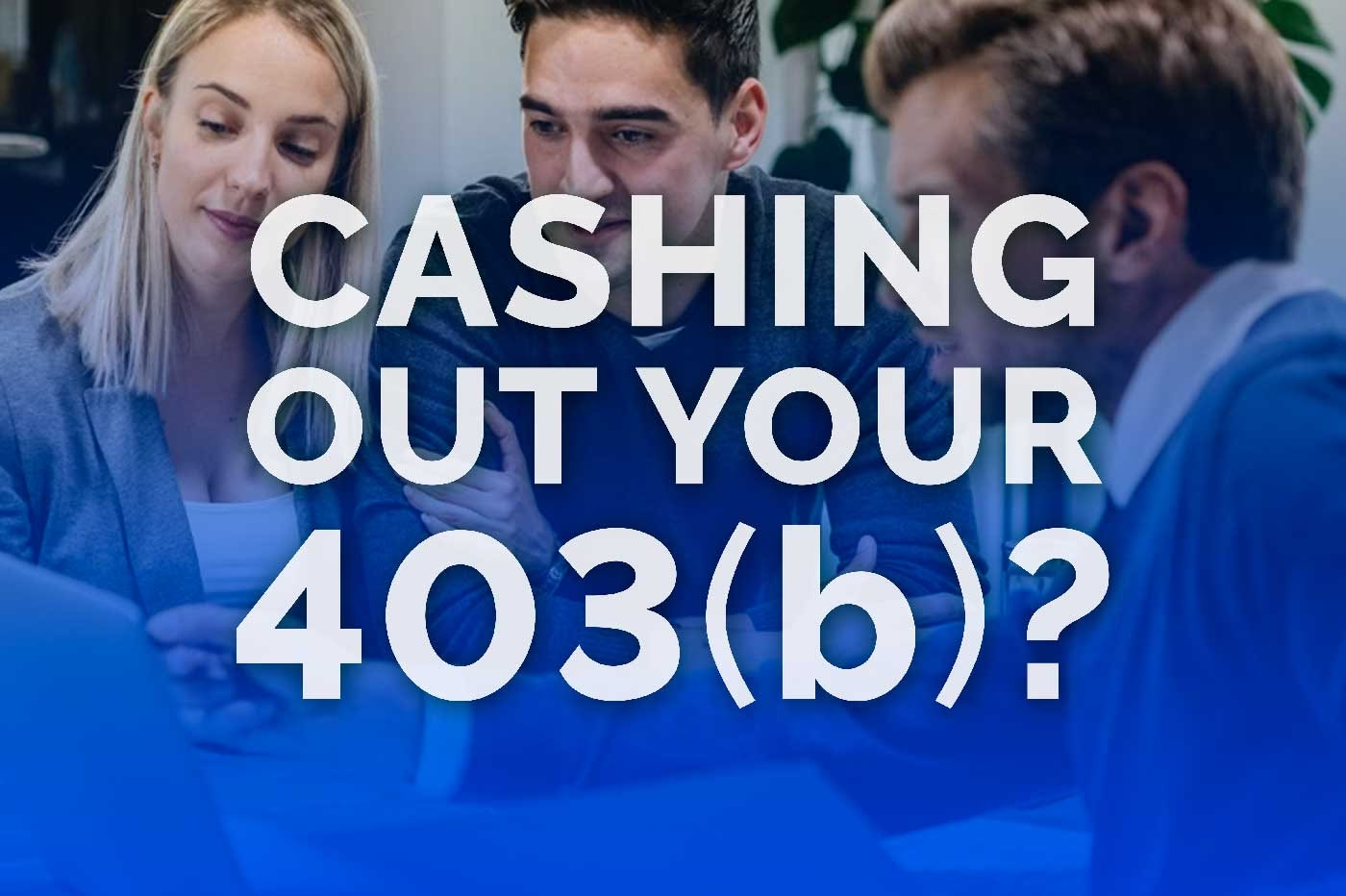You’ve left your job and you’re staring at that 403(b) balance. The money feels like it’s just sitting there. Why not cash it out and put it to good use?
Before you make that call, pause. While cashing out feels like a financial win in the moment, it can lead to some of the biggest regrets later. Why? Because what seems like quick access to cash can end up costing you thousands—immediately and over the long haul.
In this article, we’ll unpack:
-
Why cashing out is so tempting (and why it usually backfires)
-
The two biggest dangers most people overlook
-
Smarter alternatives to protect your future
Table of Contents
Why People Cash Out—and Why It’s Usually a Mistake
When people leave a job, they often think: “That account isn’t doing anything. I could use the cash now.” Maybe you’re paying off debt, covering bills, or funding a big purchase. It feels practical.
But here’s the truth:
-
That “extra money” is already yours for your future.
-
Once you cash out, you stop its growth cold—and you pay for the privilege through taxes and penalties.
Reality check: A large percentage of workers cash out retirement accounts after job changes, according to data from Fidelity and Vanguard. But most of them underestimate how much this decision costs—both now and later.
The Immediate Hit: Taxes and Penalties
This is where most people make their first mistake—they assume they’ll get their full balance. Not even close.
When you cash out a 403(b):
-
Federal and State Taxes Apply: Every dollar you withdraw is treated as ordinary income. If you’re in the 22% bracket, that’s $8,800 on a $40,000 cash-out. Add state tax and it climbs higher.
-
Early Withdrawal Penalty: If you’re under 59½, tack on another 10% penalty—that’s $4,000 on the same $40,000.
-
Mandatory Withholding: Plans often withhold 20% upfront for federal taxes, so your check may already be much smaller than expected.
Example Scenario:
Let’s say you cash out $40,000:
-
Federal tax (22%): $8,800
-
Penalty (10%): $4,000
-
State tax (5%): $2,000
Total lost: $14,800
Amount you keep: About $25,200
That’s almost 40% gone before you even spend a dime.
Key takeaway: What feels like $40,000 in your pocket might actually be closer to $25,000.
The Bigger Loss: Your Future Growth
The second danger is the one most people never calculate—the cost of lost growth.
If you leave that $40,000 invested and it grows at 6% annually for 20 years, it could become $128,000. Cash it out now, and you’ve traded a six-figure future for $25,000 today.
Think about that: Would you take $25,000 now if it meant giving up $128,000 later?
That’s why cashing out your 403(b) isn’t just a short-term decision—it’s a long-term setback.
Smarter Alternatives to Cashing Out
Before you grab that check, consider these better moves:
Leave It in the Current Plan
Most 403(b) plans allow you to keep your funds even after leaving your job. It stays invested, tax-deferred, and ready for retirement.
Roll It Over to an IRA
An Individual Retirement Account (IRA) gives you:
-
More investment options than most employer plans.
-
Potentially lower fees depending on your provider.
-
Control: You’re not tied to an old employer’s plan rules.
Bonus: Rollovers done properly are tax-free—the money goes directly from your old plan to your new IRA.
Roll It Into Your New Employer’s Plan
If your new employer offers a 401(k) or another 403(b), rolling over can consolidate accounts for easier management.
Partial Withdrawals
(If You Must 😔)
Some plans allow partial distributions, but these still trigger taxes and penalties on the withdrawn amount. Use this option only if absolutely necessary—and keep the rest invested.
Exceptions to the Rule
(When You Might Avoid Penalties)
-
Age 55 Rule: If you separate from service at 55 or older, you may withdraw without the 10% penalty (taxes still apply).
-
Disability or Certain Hardships: IRS exceptions apply for specific situations like disability or large medical expenses.
Common Misconceptions to Avoid
-
“It’s free money.” It’s not. It’s your money, already earmarked for your future.
-
“I’ll just pay the taxes later.” You pay taxes now—plus penalties if under 59½.
-
“I’ll make up for it later.” Reality check: To replace a $40,000 withdrawal over 20 years, you’d need to save hundreds extra per month.
Quick Comparison Table
| Option | Taxes Due Now | Penalty | Keeps Growing? |
|---|---|---|---|
| Cash Out | Yes | 10% | No |
| Leave in Plan | No | No | Yes |
| Roll Over to IRA | No | No | Yes |
| Roll Over to New Plan | No | No | Yes |
Pro Tip: How to Avoid Tax Shock
-
Don’t assume you’ll get the full balance—mandatory withholding is 20%.
-
Always calculate your tax bracket with the extra income added.
-
Consider a direct rollover instead—no taxes, no penalty.
Why Professional Guidance Helps
Managing this decision isn’t just about avoiding penalties—it’s about making the best long-term move for your financial life. That becomes a more complicated decision as the dollar amount increases.
A financial advisor can:
-
Run the numbers on taxes and penalties before you make a decision.
-
Compare your rollover and investment options.
-
Help you balance short-term needs with long-term security.
If you’re in search of hiring a financial advisor, make sure they are a fiduciary that is fee-only.
Final Thoughts
Cashing out your 403(b) after leaving a job is easy—but easy isn’t always smart. Taxes, penalties, and lost growth can turn that “quick cash” into a long-term regret.
The good news? You have better options. Before you act, explore rollovers, leaving the money invested, or getting professional advice. Your future self will thank you.
Ready to talk through your options? Let’s make a plan.


